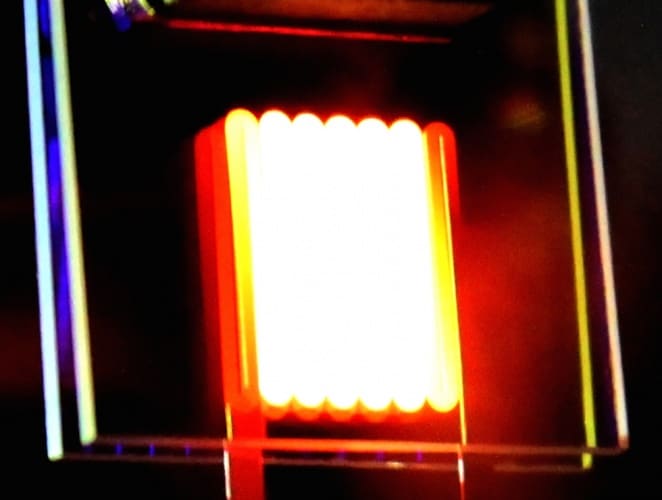The development, from Purdue University and MIT, is said to ‘recycle’ infrared photons and improves efficiency.
"The biggest disadvantage of incandescent lighting has been a lack of energy efficiency,” said Peter Bermel, an assistant professor in Purdue University's School of Electrical and Computer Engineering. "The way incandescent lights work is that you heat a filament to a certain temperature and it emits a broad band of light, but only about one in 20 photons or so is actually visible to the human eye; the other 19 photons are essentially just wasted as heat."

Researchers have now developed a potential solution in the form of a new type of filter to recycle wasted photons that is made out of alternating layers of materials including silicon dioxide and tantalum dioxide.
This approach could improve incandescent lighting efficiency by 10 times, making it more efficient than commercial compact fluorescent and LED lighting, Bermel said in a statement.
The efficiency of the new lighting source is claimed to approach that of some fluorescent and LED bulbs, and could approach 40%, which surpasses existing energy-efficient lighting sources.
Commercially available fluorescent lighting has an efficiency range from 7% to 13% and LED lighting products range from 5% to 13%, while more advanced LED lamps under development may range as high as 29%.
The selective filter designed and built by the researchers allows the passage of visible photons but not infrared photons, which reflect back to the incandescent source and are essentially recycled.
"That was the trick, really, because it's relatively easy to make something that reflects everything back or that transmits everything, but to only reflect the infrared and transmit all of the visible at the same time is harder," said Bermel, who is the lead author of a recent US patent application on the new filter concept.
When the filter reflects the infrared photons, they are eventually absorbed by the incandescent filament, causing its temperature to rise.
"You can send those infrared photons back to the emitting source as many times as you need until they get reabsorbed," Bermel said. "Each photon has a certain amount of energy associated with it, so you can reclaim that energy as heat. The net effect when you do that many times is that you can maintain a higher temperature and brightness using much less electric power than would ordinarily be required."
The Purdue-MIT team's findings are detailed in a paper published in Nature Nanotechnology.
The Nature Nanotechnology paper was authored by MIT postdoctoral associate Ognjen Ilic; Bermel; and also from MIT: Gang Chen, head of the Department of Mechanical Engineering and Carl Richard Soderberg Professor of Power Engineering; John D. Joannopoulos, the Francis Wright Davis Professor of Physics; principal research scientist Ivan Celanovic; and Marin Soljačić, a professor of physics.




April 1886: the Brunkebergs tunnel
First ever example of a ground source heat pump?